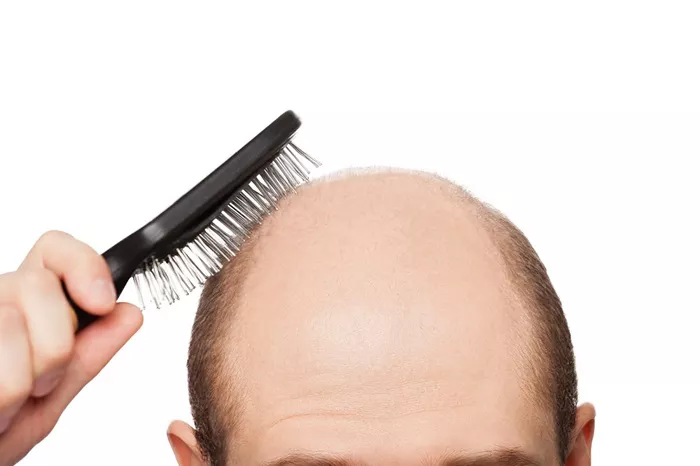Hair loss is a common concern for many individuals, particularly men. While some degree of hair shedding is normal, it can be challenging to determine what constitutes a typical amount versus a cause for concern. For those searching for answers to the question, “How Much Hair Loss Is Normal in Men?” it’s essential to provide comprehensive information that addresses the various factors influencing hair loss and when it may indicate an underlying medical issue. In this guide, we’ll explore the normal range of hair loss, the hair growth cycle, factors influencing hair shedding, gender differences, signs of abnormal hair loss, self-test tips, and when to seek medical help.
Normal Hair Loss Range
Understanding what is considered normal in terms of hair loss is the first step in addressing concerns about shedding. On average, individuals lose between 50 to 100 hairs per day as part of the natural hair growth cycle¹. This amount may vary depending on factors such as age, genetics, and overall health.
Hair Growth Cycle
To comprehend the concept of normal hair loss, it’s essential to understand the hair growth cycle. This cycle consists of three main phases: anagen, catagen, and telogen. The anagen phase is the active growth phase, during which the hair follicles produce new hair. The catagen phase is a transitional phase where growth stops, and the hair follicle shrinks. Finally, the telogen phase is the resting phase, where the hair follicle remains inactive before shedding the hair strand¹.
Factors Influencing Hair Loss
Several factors can influence the rate of hair shedding in men. Stress, both physical and emotional, can contribute to increased hair loss. Additionally, certain health conditions such as thyroid disorders, autoimmune diseases, and nutritional deficiencies can impact hair growth and lead to excessive shedding. Furthermore, styling habits such as tight hairstyles, frequent use of heat styling tools, and harsh chemical treatments can weaken the hair shaft and contribute to breakage and shedding.
Gender Differences
While hair loss is often associated with men, women also experience shedding, albeit to a different extent. Women may experience more hair shedding than men due to various factors, including hormonal changes during life events such as pregnancy and menopause. Additionally, certain styling practices, such as tight ponytails or braids, can contribute to hair breakage and shedding in women.
Signs of Abnormal Hair Loss
While some degree of hair shedding is normal, certain signs may indicate abnormal hair loss. These include bald spots or patches of thinning hair, excessive hair loss during showering or brushing, and noticing clumps of hair falling out. Paying attention to these signs can help individuals identify when their hair loss may be a cause for concern.
Self-Test Tips
Individuals concerned about hair loss can perform simple self-tests to assess the severity of their shedding. One common method is the pull test, where a small amount of hair is gently pulled from different areas of the scalp to assess how many hairs are shed. Additionally, individuals can monitor their hair loss by checking for excessive hair accumulation in the shower drain or on their hairbrush. Keeping track of hair loss patterns can help determine whether further evaluation is necessary.
When to Seek Medical Help
While occasional hair shedding is normal, certain circumstances warrant medical evaluation. It’s essential to consult a healthcare professional if hair loss is sudden, severe, or accompanied by other symptoms such as itching, pain, or changes in the scalp’s appearance. Additionally, individuals with a family history of hair loss or underlying health conditions should seek medical advice to determine the cause of their shedding and explore treatment options.
In conclusion, understanding what constitutes normal hair loss in men involves considering various factors such as the hair growth cycle, lifestyle habits, and overall health. While some degree of shedding is to be expected, it’s essential to recognize signs of abnormal hair loss and seek medical help if necessary. By addressing these key points, individuals can gain a better understanding of their hair loss concerns and take appropriate action to maintain healthy hair growth.
you may be interested

